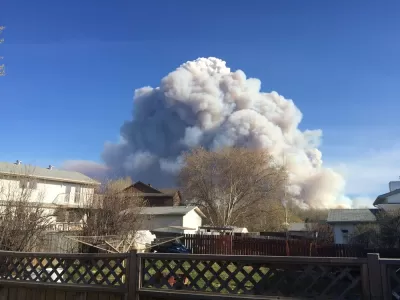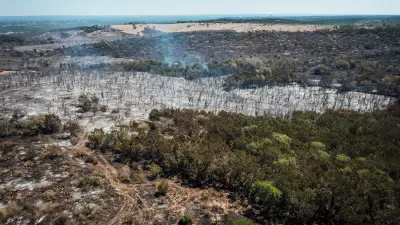Along with climate conditions, urban sprawl is intensifying wildfires and increasing the damage they do.

In light of the recent evacuations in Alberta and the seemingly never-ending fire season in California, worsening fires throughout North America have been attributed to the impacts of climate change. But Undark notes that patterns of human development can also make fires more dangerous.
For one, "the population in an area, where people live, and how many roads there are, all affect the behavior of fires and their risk to people."
More development at the edge of urban areas and wildlands could make the consequences of fires there much greater.
“For some of the problems like, home losses, or fatalities, or evacuability of our fire prone communities, or budgets — how many hundreds of millions of dollars are spent each year on fire suppression — a lot of that comes back to something that is not a fuels problem, it’s an issue of where and how we built our human developments,” [researcher Max Moritz] said.
The more of these problems the U.S. Forest Service and local fire departments have to deal with, the more resources they have to expend on each fire.
And one theory argues that the long-standing strategy of suppression—which can ultimately lead to bigger, wilder fires—also grew from the shift to fossil fuels and a new power infrastructure during the industrial revolution.
FULL STORY: The Push and Pull of Forest Fire Management

Planetizen Federal Action Tracker
A weekly monitor of how Trump’s orders and actions are impacting planners and planning in America.

Maui's Vacation Rental Debate Turns Ugly
Verbal attacks, misinformation campaigns and fistfights plague a high-stakes debate to convert thousands of vacation rentals into long-term housing.

Restaurant Patios Were a Pandemic Win — Why Were They so Hard to Keep?
Social distancing requirements and changes in travel patterns prompted cities to pilot new uses for street and sidewalk space. Then it got complicated.

In California Battle of Housing vs. Environment, Housing Just Won
A new state law significantly limits the power of CEQA, an environmental review law that served as a powerful tool for blocking new development.

Boulder Eliminates Parking Minimums Citywide
Officials estimate the cost of building a single underground parking space at up to $100,000.

Orange County, Florida Adopts Largest US “Sprawl Repair” Code
The ‘Orange Code’ seeks to rectify decades of sprawl-inducing, car-oriented development.
Urban Design for Planners 1: Software Tools
This six-course series explores essential urban design concepts using open source software and equips planners with the tools they need to participate fully in the urban design process.
Planning for Universal Design
Learn the tools for implementing Universal Design in planning regulations.
Heyer Gruel & Associates PA
JM Goldson LLC
Custer County Colorado
City of Camden Redevelopment Agency
City of Astoria
Transportation Research & Education Center (TREC) at Portland State University
Jefferson Parish Government
Camden Redevelopment Agency
City of Claremont




























